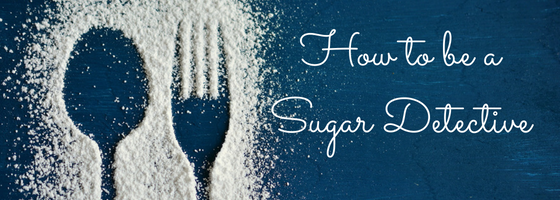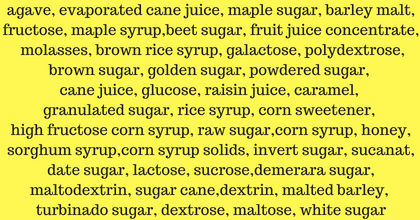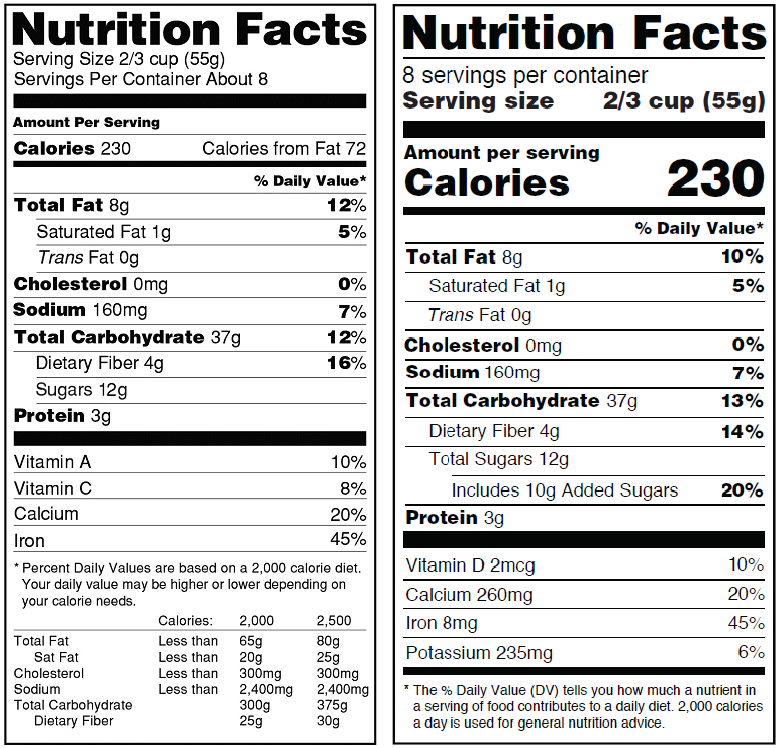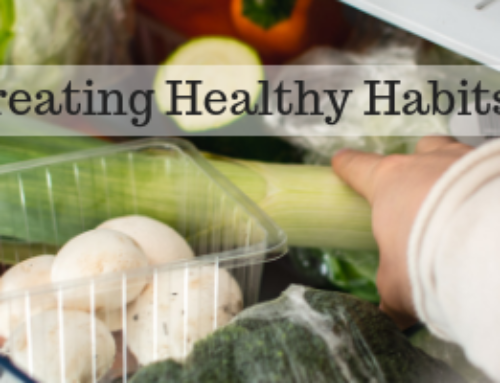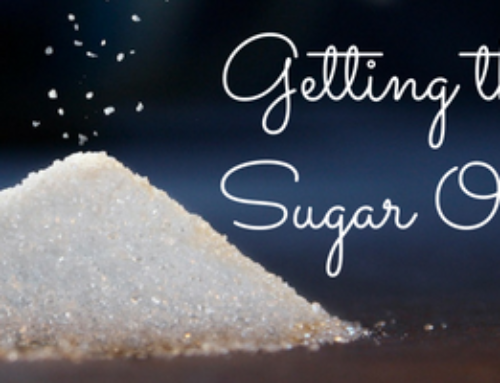You must be a sugar detective, plain and simple. In my last post, I discussed all the different forms of sugar that might be lurking out there in the food supply, especially in packaged foods. To be a good sugar detective, it’s important to learn all the names of sugar. This is especially true for packaged foods, because the food industry adds sugar to most packaged foods. Here is a list of some of the most common sugars.
One of the easiest ways to avoid added sugars is to eliminate packaged foods. But that isn’t always realistic, and just because a food is packaged, doesn’t mean it is off limits. This is why learning how to read food labels is so important. It’s not too hard, but you must implement it every time you pick up a new food (something you have not purchased before) to decipher if it is okay to throw in the grocery cart.
First, start with the ingredients label. Scan the label to see how many times you find a form of sugar. Remember, there are many names for sugar!
Next, figure out how much total sugar, and added sugars are in a packaged food. Nutrition Facts labels have recently been upgraded to show exactly how much added sugar is in a food. This is great! Some foods have natural sugar in them too, mainly derived from fruit or dairy. However, most of the other sugar you will find in a packaged food is added sugar. Here is an example of the old label on the left, and the new label on the right. In the old label, all sugars, both natural and added were lumped together. In the new label, they are separated.
So how much added sugar is okay? In my honest opinion, the best amount of added sugar is ZERO grams. But let’s be realistic, next best? No more than 5 grams of added sugar. Five grams of sugar is about a teaspoon of sugar. So, if a food has over 5 grams of added sugar, rethink your purchase. If the food has over 5 grams of total sugar, but these come from natural sources, then it is better, but remember — it is still sugar.
In general, I coach my clients to reduce their overall sugar intake. Ideally, your sugar should be coming from 2 – 3 servings of fruit per day, and a small amount from plain diary products, like yogurt — if you eat and tolerate dairy. If you are trying to reduce your overall sugar intake, then I would suggest you evaluate natural sugars too. For instance, ¼ cup of raisins has 30 grams of sugar, or 2 Tablespoons of sugar—a pretty big dose for most people.
The bottom line is to enjoy foods that have natural sugars in them, especially fruit when it is in season. If you have blood sugar issues or are trying to lose weight, then you may not want to go overboard on fruit. When it comes to added sugars, be a sugar detective and reduce them as much as possible — especially in everyday packaged foods. You might not need to give sugar up completely, but save it for those special occasions!
If you found this post helpful, feel free to share with family and friends!
In Health,


